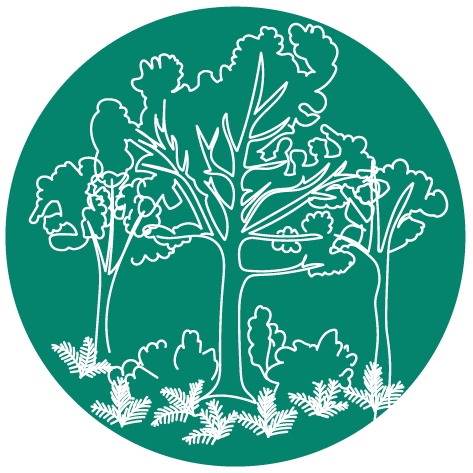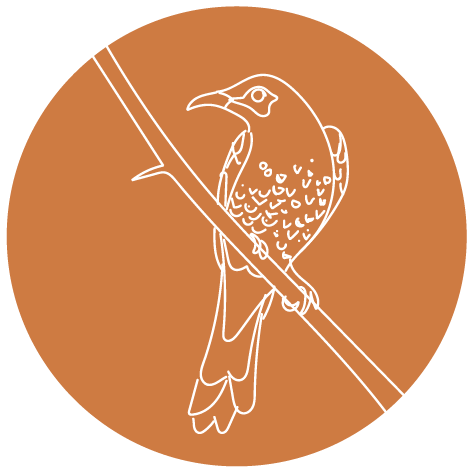A snapshot of the condition of some priority species across north east Victoria is described in the following section:
Bogong moth (Agrotis infusa)

The annual migration of the bogong moth is of great ecological and cultural significance. The species is responsible for a tremendous influx of energy in the alpine ecosystem and played a critical role as a significant food source for Traditional Owners/First Nations.
The bogong moth was an annual delicacy for Traditional Owners/First Nations – a major food source in the cooler months, eaten cooked whole or as a paste. All of the clans would assemble in the mountains at Omeo and feast on the bogong moth.
Bogong moth populations have been in decline since the 1980s, but the number of individuals to arrive in the Alps has declined drastically in recent years, with a significant crash in 2017. The reason behind the decline in moth numbers is still unclear; it is likely to be a combination of changes in land uses, clearing of vegetation, light pollution, and the impacts of droughts in breeding grounds.
Since the spring of 2019, higher numbers of bogong moths have returned to the Snowy Mountains and the Victorian Alps but are still relatively low.
Mountain pygmy-possum (Burramys parvus)

There are thought to be around 2,000 mountain pygmy-possums remaining in the wild, restricted to alpine rock screes and boulder fields of alpine areas in Victoria and NSW.
With a small remaining population and limited geographic distribution, the mountain pygmy-possum is vulnerable to threats such as invasive species, disturbances arising from development and tourism activities in Alpine resorts, and further loss of habitat due to climate change.
The expected reduction in annual snow cover extent and duration are among the greatest threats to mountain pygmy-possum survival, leading to a decrease in insulation and disruptions in hibernation patterns. The increase in fire frequency and intensity are also a significant threat to populations. In north east Victoria, bushfires have repeatedly impacted the Mt Bogong to Mt Higginbotham populations in 2003, 2006-07 and 2013.
Alpine peatlands

North East Victoria is home to more than 2000 ha of alpine peatlands or Alpine Sphagnum Bogs and Associated Fens, an endangered ecological community listed under the EPBC Act 1999.
Alpine peatlands have a critical role in the hydrology of alpine environments, contributing to water quality and providing habitat for various endemic and threatened flora and fauna species.
The ecological community also supports the alpine spiny crayfish (Euastacus crassus), listed as threatened in Victoria, and species of native galaxiid fish, including the nationally endangered barred galaxias (Galaxias fuscus).
Little is known about the condition of alpine peatlands before European settlement. Estimates suggest less than 15% of this community’s pre-European extent remains fully functional. Thanks to conservation initiatives, alpine peatlands have been comprehensively mapped across their range – the information collected over the past decade will help manage and monitor this threatened community.
Alpine ash (Eucalyptus delegatensis)

The stands of alpine ash (Eucalyptus delegatensis) are iconic features of alpine landscapes in north east Victoria, highly valued for their aesthetic beauty, economic values and ecological services.
Old-growth ash forests may contain individuals over 200 years old. It takes approximately 20 years for the alpine ash to reach reproduction maturity. The species is an obligate seeder, which means they do not readily resprout after fires. Instead, most individuals are killed, and populations depend on post-fire seeding for regeneration.
The decline of remaining adult trees and consecutive high-intensity fires occurring with intervals of less than 20 to 30 years could prevent young trees from reaching maturity. With regeneration at stake, alpine ash stands may be replaced by other non-forest vegetation types, fundamentally altering local landscapes.
The 2019-20 bushfires impacted about 22,000 ha of immature ash forest. Management to protect ash forests is challenging, relying primarily on strategic burning and aerial seeding programs. Monitoring the regeneration capacity and response to bushfires is a key action to support the conservation of the alpine ash.
Macquarie Perch (Macquaria australasica)

Macquarie perch (Macquaria australasica) was once widespread in the Murray-Darling Basin, but current populations are now small, with a limited and fragmented distribution. In north east Victoria, the species occurs in the Mitta Mitta and Ovens catchments.
Historical research indicates local numbers of Macquarie perch in Victoria started to decline in the early 1900s, with widespread population extinctions occurring between 1920 and 1960. Threats related to population declines include sedimentation increases, competition and predation by invasive species, diseases (EHNV), barriers to fish movement, altered flow regimes and water pollution. Recreational fishing has also almost certainly contributed to the species’ decline in the past.
Since 2006, ongoing monitoring of key populations in Victoria has informed the health and condition of Macquarie perch populations, The Lake Dartmouth population has shown signs of recovery since 2008 and remains the largest and one of the most genetically diverse populations left in the Murray Darling Basin. The Dartmouth population plays an essential role as a source of broodfish for captive breeding and translocations.
In early 2021, surveys in the mid-King River detected juvenile Macquarie perch near Edi – which are likely to be the first natural recruits since the 1950s and a positive outcome of efforts to recover the species in the region.
Victorian Temperate Woodland Bird Community

The Victorian Temperate Woodland Bird Community consists of a group of woodland-dependent birds. Extensive clearing of woodlands combined with other threats has led to at least one in five woodland species becoming threatened.
With limited habitat and resources available, competition is an increasing threat to woodland birds. The noisy miner (Manorina melanocephala), for example, is a territorial and overabundant species known to displace other native birds.
The nationally endangered regent honeyeater (Anthochaera phrygia) and swift parrot (Lathamus discolor) are two iconic species that are the focus of extensive recovery programs. These programs contribute to the overall conservation of woodlands and bird communities. Initiatives include captive breeding and release, incentives for protecting habitat on private land and improvement of habitat on public land.
Retaining scattered trees on private land contributes to landscape connectivity and the perseverance of species – studies with the brown treecreeper (Climacteris picumnus victoriae) suggest remnant trees may support the movement of this species as much as vegetation corridors.


